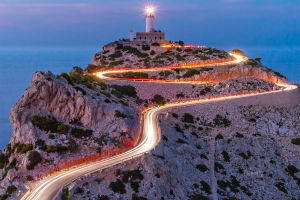Salt lakes are a unique geological phenomenon that has fascinated scientists and nature enthusiasts for centuries.
They exist all over the world and are known for their highly concentrated saline waters. The formation of salt lakes is a complex process that involves specific geological and climatic conditions. In this article, we will explore how salt lakes are formed and some of the most famous salt lakes around the world.
Salt lakes are formed under specific geological and climatic conditions. They require a climate that has both a water source and a constant high temperature and low humidity. In this type of climate, the salts in the water are not re-dissolved, so they eventually accumulate at the bottom of the lake and form a salt lake.
The process of salt lake formation begins when the water in the lake evaporates in response to solar radiation. As the water evaporates, the salt concentration in the lake increases, and eventually, the salt content becomes too high for any further evaporation to occur. At this point, the salt starts to accumulate on the bottom of the lake, leading to the formation of a salt lake.
In addition to the specific climatic conditions, salt lakes need a low-lying basin as a container so that the salts can collect and accumulate on the bottom of the lake as the water evaporates from the lake.
These basins are usually formed as a result of geological activity, such as earthquakes or other natural phenomena. The size and depth of the basin also affect the rate and quality of salt lake formation. The larger and deeper the basin, the more salt it can accumulate and the longer it takes for a salt lake to form.
There are many famous salt lakes around the world, each with its unique features and characteristics. One of the most famous salt lakes is the Great Salt Lake in the United States. Located in Utah, the Great Salt Lake is the largest saltwater lake in the Western Hemisphere and the eighth-largest terminal lake in the world.
It is known for its high salt content, which is about ten times saltier than seawater. The lake is also home to many unique species of plants and animals that have adapted to the extreme salt conditions.
Another famous salt lake is Death Valley in California. It is a low-lying basin located in the Mojave Desert and is known for its extreme heat and arid climate.
The valley is home to many salt flats and salt pans that are remnants of ancient salt lakes that once existed in the area. The Salar de Atacama in Chile and the Salar de Uyuni in Bolivia are two other famous salt lakes that are known for their stunning beauty and unique landscape.
Apart from natural causes, human activities may also influence the formation of salt lakes. Salt lakes can be formed through salinization, which is caused by the excessive use of chemical fertilizers and irrigation water by humans during mechanized agriculture, resulting in the accumulation of saline in the soil and its gradual convergence into a salt lake.
Salinization can have harmful effects on the environment and local communities, as it can cause soil degradation and reduce agricultural productivity.
Salt lakes are a unique geological phenomenon formed under specific climatic and geological conditions. They are known for their highly concentrated saline waters and are home to many unique species of plants and animals that have adapted to extreme salt conditions.
While salt lakes are fascinating, they can also have harmful effects on the environment and local communities, especially when formed as a result of human activities. It is, therefore, important to study and understand the formation and characteristics of salt lakes to ensure their protection and preservation for future generations to enjoy.


